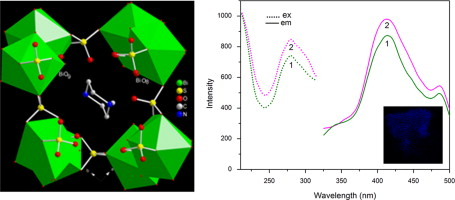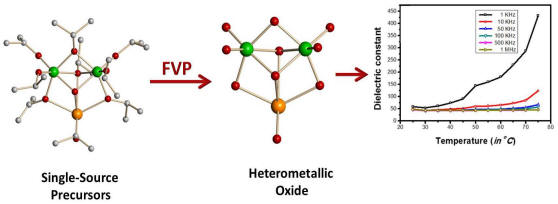



X-ray Diffractometer (single crystal and powder), SQUID Magnetometer, Gas Adsorption and separation (Micrometrics), TGA, DSC, NMR, UV-VIS, FT-IR, NMR, Conductivity, EDX, SEM, TEM, Electrochemical Workstation, GCMS, HPLC and Confocal Microscope
Research
Areas:
| 1 | Porous
Magnetic Materials |
||
 |
|||
| 2 | Organic-Inorganic Hybrid Materials: Organic-inorganic hybrid open-framework bismuth sulfates with the layered and three-dimensional structures have been synthesized and characterized. The arrangement in bismuth atom in one of the compound suggests the presence of stereo active lone pair of electrons. All compounds show good fluorescence properties exhibiting blue luminescence. | ||
 |
|||
| 3 | Supercapacitor for Layered Composite Materials: Layered composite materials of metal chalchogenides with reduced graphene oxide are being prepared and their supercapacitor capacity is being tested, as these materials shows potential applications in storage devices. | ||
 |
|||
| 4 | Low-temperature Multiferroics: We are also developing the strategies to synthesize materials with ferroelectric properties at low temperature. | ||
 |
|||
| 5 | Electrocatalyst for Water Splitting: Designing New Catalysts based on earth abundant non-precious elements such as Ni, Co, Fe, Mn, Cu, S, Se, Te, N and P which show high catalytic activity for oxygen evolution reaction (OER) and hydrogen evolution reaction (HER) - the two half-cell reactions for water splitting. | ||
| 6 | Heterogeneous
Catalysis in Metal-Organic Frameworks |
||
| Characterization Techniques
using Instruments: X-ray Diffractometer (single crystal and powder), SQUID Magnetometer, Gas Adsorption and separation (Micrometrics), TGA, DSC, NMR, UV-VIS, FT-IR, NMR, Conductivity, EDX, SEM, TEM, Electrochemical Workstation, GCMS, HPLC and Confocal Microscope |